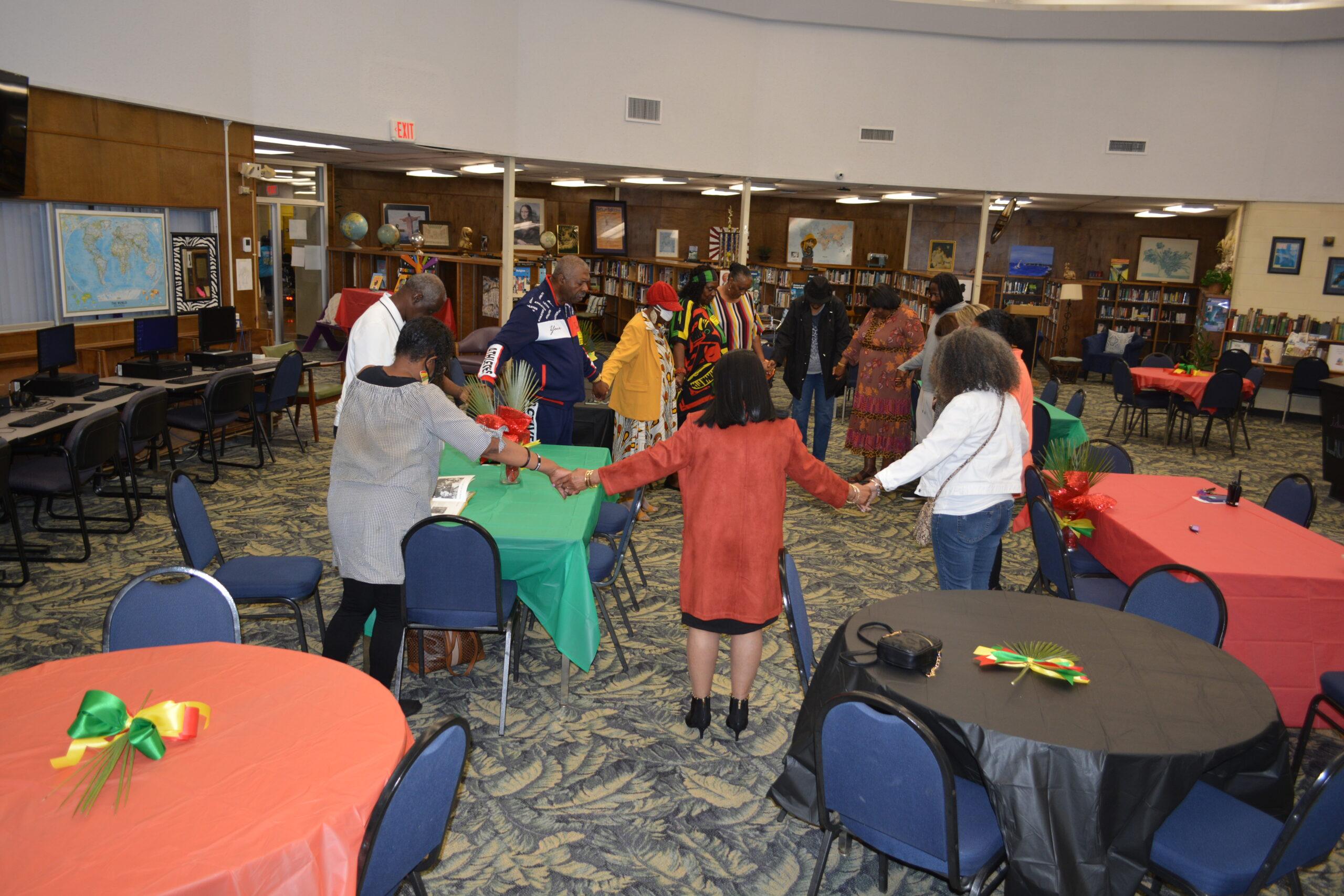PSJHS rounds out Black History Month with program discussing school’s desegregation
Port St. Joe High School’s Black History Month program looked a little different this year.
Instead of gathering students and local visitors into the school’s gymnasium to hear an invited guest speaker deliver an address, the school looked to take a more intimate approach to the annual tradition.
A small group of locals gathered in the school’s library and students gathered in classrooms on Monday afternoon, where they sat down to watch a streamed account of history — local history and the story of the high school’s own integration.
“Today we are here to share with you the history of education in the city of Port St. Joe,” said program emcee and history teacher Jennifer Worthy, opening the event.
Port St. Joe High School was officially integrated in 1970, with the unveiling of the school’s new building at its current location and the shuttering of George Washington High School, the community’s former segregated school. This was more than a decade after the Supreme Court’s decision in Brown v. The Board of Education.
For the five years prior, Black students in Port St. Joe were able to elect to attend Port St. Joe High School.
About a third of the town’s Black student body did voluntarily integrate, including Deborah Stallworth Crosby, who was featured in the program. But despite having been desegregated, the school had not come to embrace these changes.
“For students who had previously attended George Washington High School, these brave students faced many challenges and were not welcomed by all. Even though they had voluntarily joined Port St. Joe High School, they dealt with limited access within the community and rode segregated buses,” a student said during the program.
“Black students were not allowed to be a part of some extracurricular activities, such as cheerleading, so they stayed the course and practiced peaceful protests, such as walkouts at sporting events and sit-ins on the grass in front of the school.”
Crosby, who later went on to become a teacher at the school and ESE director for the school district, encouraged the community to keep moving forward towards achieving collective goals.
According to Clarence Monette, a former Washington High and PSJHS teacher who was featured in the program, the school’s full desegregation in 1970 was followed by several years of turmoil among students and faculty.
“There were many days of physical violence due to stereotypes held by both Blacks and whites,” a student said during the program, quoting Monette.
“Teachers like Mr. Monette (were) instrumental to resolving the misunderstandings of those stereotypes. He had grown up in the South and had life experiences that had prepared him for this transition… Mr. Monette believes that the greatest accomplishment of integration was that by attending school together, students were able to confront unspoken biases towards people of different racial or ethnic backgrounds.”
Following the account of the school’s integration, the program went on to discuss the history behind Port St. Joe High School’s tiger shark mascot and school colors.
“The purple of the original Port St. Joe High School, combined with the gold of the Washington High stands tall. These colors represent the history and unity of our community,” emcee and coach Keion McNair said
“… We took the tiger from Washington High School and combined it with the shark of Port St. Joe High School, and now we are the strong and proud Tiger Sharks.”
Several students from the school participated in producing and presenting in the program. They included Mya Clemmons, Makahan Jones, Demee Stallworth and Necie Sims.

